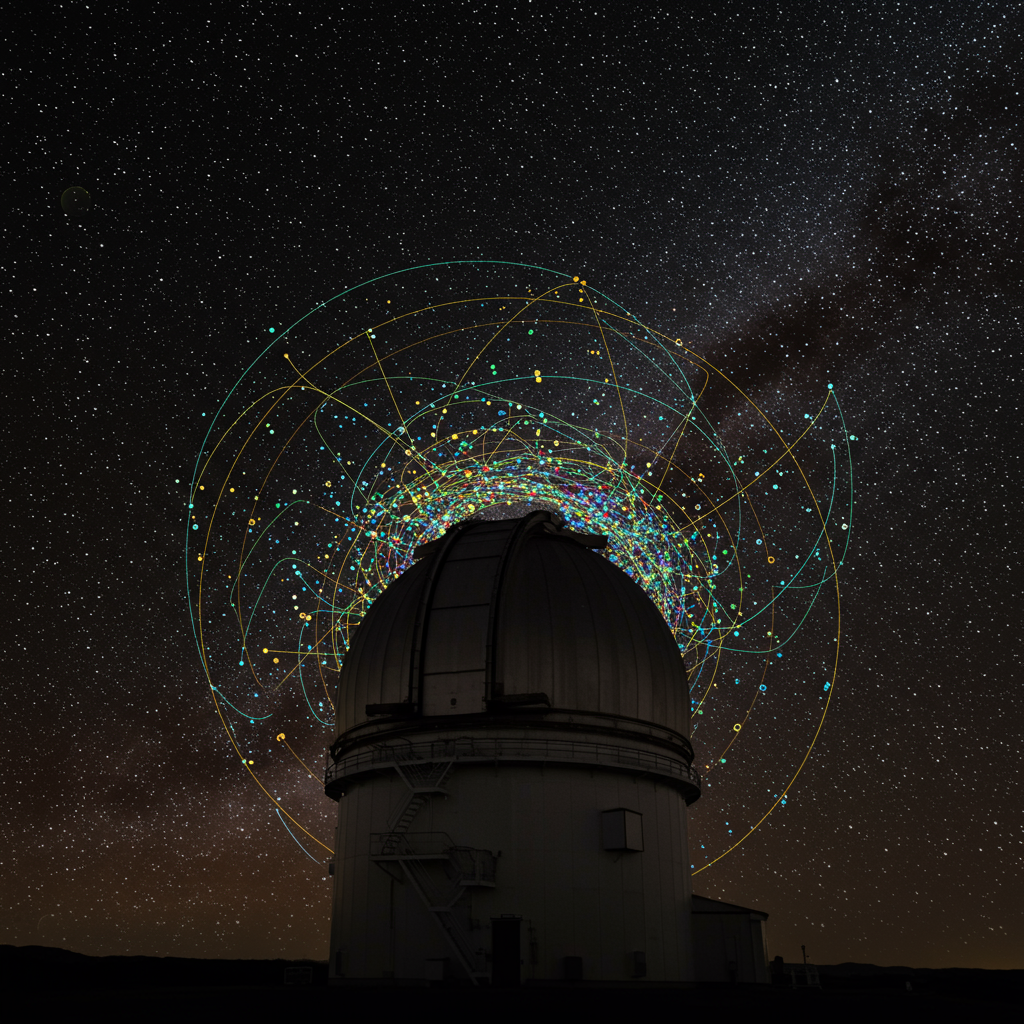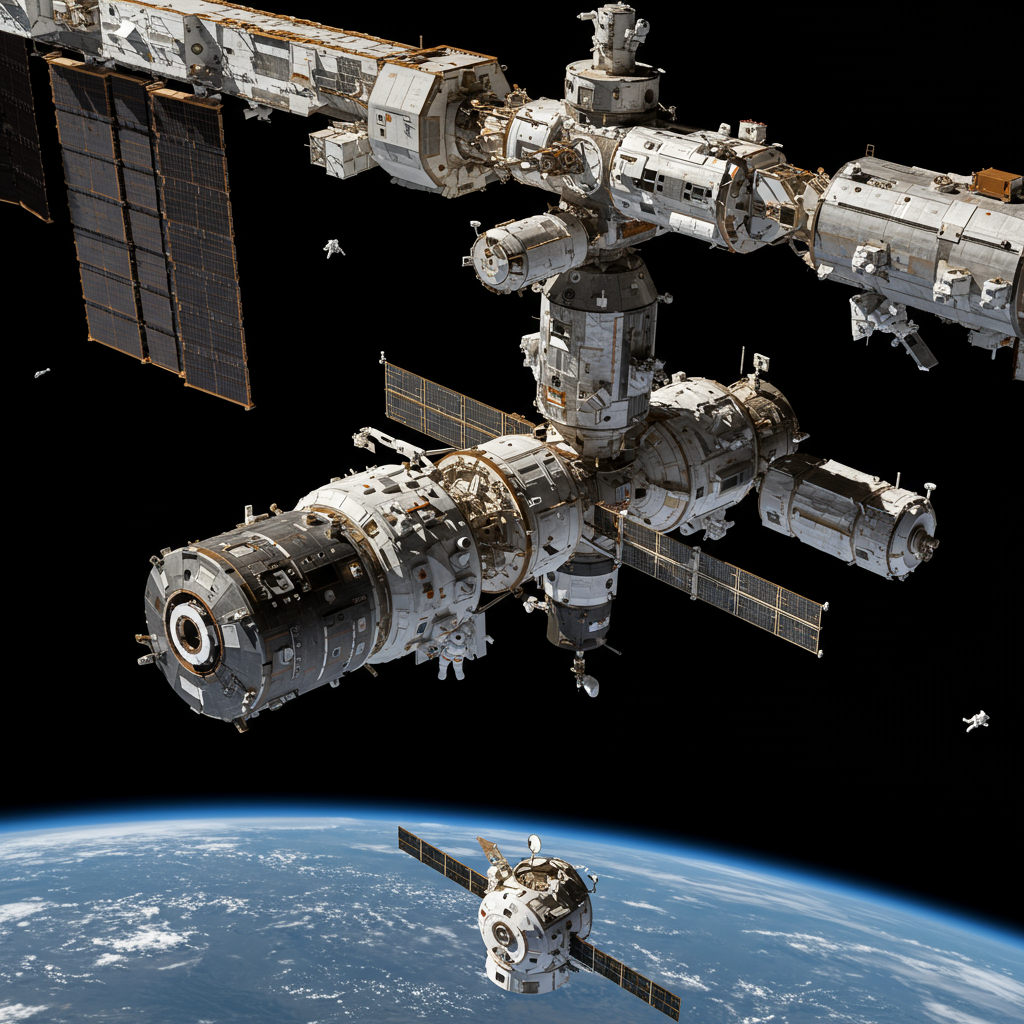The astronomy world recently saw a glimpse of the future, and it’s dazzling. After over two decades of anticipation, the Vera C. rubin Observatory unveiled its first test images. The early results are nothing short of spectacular, especially for those tasked with protecting our planet from cosmic impacts. In an astonishing demonstration of its power, this brand-new telescope spotted over 2,000 previously unknown asteroids in just 10 hours of initial observations. These findings immediately prove Rubin is a revolutionary tool for asteroid detection and planetary defense, completely changing the game for scientists tracking potentially hazardous space rocks. Yet, strangely, NASA’s public reaction has been notably quiet.
Unveiling a New Era in Sky Surveys
The Vera C. Rubin Observatory, a major collaboration between the National Science Foundation (NSF) and the Department of Energy’s (DOE) Office of Science, has been a project long in the making. Its recent first light announcement marked a significant milestone. Scientists worldwide have eagerly awaited this moment, knowing the potential held within rubin’s advanced instruments.
During just 10 hours of test observations, the observatory didn’t just capture beautiful images of the cosmos; it also delivered concrete, impactful data. Among the more than 2,000 newly discovered asteroids, seven were identified as near-Earth asteroids (NEAs). While none of these specific finds currently threaten our planet, the speed and volume of these discoveries are unprecedented. Experts agree this early success confirms Rubin’s capability to find and track far more space objects than ever before. Richard Binzel, an MIT professor of planetary sciences and creator of the Torino Scale (used to classify potential Earth impact risks), shared his astonishment. He told Gizmodo that while they expected the camera system to be “breathtaking,” the actual performance “has exceeded all our expectations.”
A Deluge of Data for Planetary Defense
The sheer volume of new data from Rubin is set to transform the work of organizations like the International Astronomical Union’s Minor Planet Center (MPC). The MPC is the globally recognized authority responsible for cataloging and distributing information on asteroids, comets, and other small celestial bodies. Its role is vital for the early detection and monitoring of objects that could pose a threat to Earth. The MPC has spent years upgrading its software and infrastructure to handle the massive influx of observations expected from Rubin. Matthew Payne, the MPC director, described receiving the first wave of data as simultaneously “nerve-racking and exciting.”
Why is this data volume so critical? In 2005, the U.S. Congress mandated NASA establish a program to find, track, and characterize 90% of all near-Earth asteroids and comets larger than 328 feet (100 meters) in diameter by 2020. Objects of this size could cause devastation on a continental scale upon impact. Current estimates suggest NASA has only found about 40% of these potentially hazardous objects. Rubin’s ability to conduct rapid, deep, and wide surveys is exactly what’s needed to significantly accelerate progress toward this goal. Payne noted that this dramatic increase in observations—from the MPC’s current rate of about 50-60 million per year to potentially 250 million annually from Rubin’s main survey—is truly “a game changer.” As Payne put it, this observatory is “just going to start revolutionizing our understanding of this population of things.” Binzel echoed this sentiment, highlighting that finding these objects years or decades in advance is the best possible outcome. If a dangerous object is headed our way, knowing about it early provides crucial time. NASA’s Planetary Defense Coordination Office (PDCO) is actively developing deflection capabilities, famously demonstrated by the successful DART mission in 2022, which altered an asteroid moonlet’s orbit.
The Technology Behind the Breakthrough
Rubin’s exceptional capability stems from its innovative design and powerful instruments. It features a unique three-mirror telescope design coupled with the largest digital camera ever constructed. This allows the observatory to rapidly scan the entire southern sky while simultaneously detecting faint objects like distant asteroids. This bridges a critical technological gap.
As MPC astrophysicist Peter Veres explained, finding faint space rocks requires going “as deep as possible,” a capability traditionally lacking in many planetary defense survey telescopes. Rubin’s main endeavor, the Legacy Survey of Space and Time (LSST), will tackle this over the next decade. Using its 27.6-foot (8.4-meter) Simonyi Survey telescope, Rubin will create a nearly continuous, ultra-high-definition time-lapse record of the southern sky. Each brief 30-second exposure will cover an area 45 times larger than the full Moon. These wide-field images are then stitched together, allowing Rubin to survey the entire southern sky every three nights. This combination of enormous field of view, sensitivity to faint objects, and rapid survey speed is expected to generate an avalanche of new asteroid discoveries.
However, even with this revolutionary technology, detecting certain asteroid populations remains challenging. For instance, a recent study highlighted the difficulty in spotting asteroids that share an orbit with Venus, often hidden by the Sun’s glare. While Rubin’s wide sweeps might catch some during favorable alignments, fully cataloging these specific “Venus co-orbitals,” which could potentially pose a threat to Earth, might ultimately require dedicated space-based observations. This illustrates that even a powerful tool like Rubin is part of a larger, complex planetary defense effort.
NASA’s Curious Silence
Given Rubin’s groundbreaking potential and the immediate global attention it garnered, many in the space community expected NASA to be among the loudest cheerleaders. That hasn’t happened. The agency has remained remarkably quiet about the observatory’s debut and its initial discoveries. Keith Cowing, an astrobiologist and editor of NASA Watch, described Rubin’s asteroid-finding pace as a “warp drive version.” He added that you would naturally expect planetary defense personnel to be “in the front row cheering it on, saying, ‘send me the data!’”
Yet, NASA shared no public information about Rubin’s first light event and hasn’t publicly promoted the findings. When Gizmodo contacted NASA for comment on Rubin’s contributions, the agency declined, instead suggesting they contact the observatory directly. Even a recent report from NASA’s Office of the Inspector General, reviewing the agency’s planetary defense strategy, mentioned Rubin only briefly alongside NASA’s own forthcoming NEO Surveyor space telescope. The report acknowledged that “These new observatories are expected to find and track significantly more NEOs,” but didn’t specifically highlight Rubin’s unique impact or the volume of its initial data.
This muted response has led to speculation about internal issues at NASA. Cowing suggested the agency feels “jittery,” particularly due to budget uncertainties. President Trump’s 2026 budget proposal, for example, reportedly suggested a drastic 47% cut to NASA’s science funding, potentially jeopardizing dozens of missions. This climate of fear and uncertainty, where employees might be concerned about job security, could be hindering the routine, collaborative work expected between agencies and international partners. NASA also faces complexity due to its increasing reliance on private companies like SpaceX for critical functions such as ISS resupply and crew transport, and future Artemis Moon landings, adding another layer to its operational and political landscape. While not directly tied to Rubin’s data, this context underscores the challenging environment NASA currently navigates, potentially impacting its ability or willingness to fully embrace achievements from external collaborations, even those vital to its mission.
The Future of Planetary Defense
The Vera C. Rubin Observatory has unequivocally proven its status as a game-changer for asteroid detection and cataloging. Its Legacy Survey of Space and Time promises an unprecedented understanding of the asteroid population, particularly the larger objects mandated by Congress. The potential to find hazardous objects decades in advance is a critical step forward for planetary defense efforts, providing essential lead time for potential deflection missions like DART.
However, questions linger regarding whether NASA, currently leading global planetary defense, will have the necessary resources and personnel to fully leverage Rubin’s vast data stream amidst budget pressures and internal challenges. Despite these uncertainties, the scientific community remains hopeful. As Richard Binzel stated, “Great nations do great science.” He expressed continued faith that the U.S. will maintain its commitment to groundbreaking scientific endeavors, ensuring Rubin’s potential for planetary protection is fully realized.
Frequently Asked Questions
What makes the Vera C. Rubin Observatory so effective at finding asteroids?
The Vera C. Rubin Observatory combines a unique large three-mirror telescope design with the world’s largest digital camera. This allows it to perform rapid, wide-area surveys of the sky while detecting very faint objects, including distant asteroids. Its planned 10-year Legacy Survey of Space and Time (LSST) will continuously scan the southern sky, generating an enormous volume of data that will dramatically increase the rate of asteroid discovery and tracking compared to existing facilities.
Where does the data from Rubin’s asteroid discoveries go?
Data from the Vera C. Rubin Observatory’s asteroid discoveries goes directly to the International Astronomical Union’s Minor Planet Center (MPC). The MPC is the global organization responsible for cataloging and disseminating data on small celestial bodies. They have spent years preparing their systems to handle the massive data flow expected from Rubin’s Legacy Survey of Space and Time (LSST), which will provide orders of magnitude more observations than they currently receive.
How will Rubin’s data impact NASA’s goal of finding hazardous asteroids?
Rubin’s data is expected to significantly accelerate NASA’s progress towards the 2005 Congressional mandate to find 90% of near-Earth asteroids larger than 328 feet (100 meters) in diameter. Currently, only about 40% of these objects, capable of causing continental-scale destruction, have been found. Rubin’s deep, rapid sky surveys will identify vast numbers of new objects, helping to close this gap years or decades ahead of potential impact, providing crucial time for NASA’s Planetary Defense Coordination Office (PDCO) to plan mitigation strategies.




